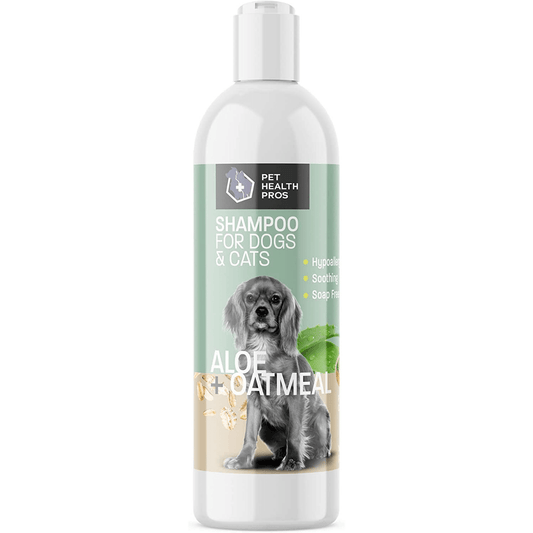Gabapentin is a medication that can help dogs with various health issues, especially those related to pain and anxiety. If you're a pet owner considering gabapentin for your furry friend, understanding the right dosage is crucial. This guide will walk you through the essentials of gabapentin dosage for dogs, ensuring you have the knowledge you need to keep your pet safe and healthy.
Key Takeaways
- Gabapentin is commonly used for pain relief and anxiety in dogs.
- Dosage depends on factors like weight and health condition.
- Always consult your veterinarian before starting gabapentin.
- Watch for side effects and communicate any concerns with your vet.
- Regular monitoring is important for dogs on long-term gabapentin.
Understanding Gabapentin and Its Uses for Dogs
What Is Gabapentin?
Gabapentin is a medication initially developed to treat seizures in humans, but it's now commonly used in veterinary medicine. It's an anticonvulsant and analgesic (pain reliever) that can be helpful for managing various conditions in dogs. It's important to know that while it can be effective, it's not a cure-all and works best when used as part of a broader treatment plan. It's available only with a prescription, so you'll need to consult with your vet to see if it's right for your dog.
Common Uses in Veterinary Medicine
Gabapentin has several applications in treating dogs. Here are some of the most frequent uses:
- Chronic pain management, especially for arthritis or nerve pain.
- Seizure control, often used in conjunction with other anticonvulsants.
- Anxiety reduction, particularly for vet visits or noise phobias.
- Post-operative pain relief, helping dogs recover more comfortably after surgery.
Gabapentin can be a useful tool in managing these conditions, but it's not always the first line of defense. Your vet will consider your dog's specific needs and medical history before prescribing it. If your dog has digestive issues, you might want to consider probiotic paste for dogs to help with their gut health.
How Gabapentin Works in Dogs
Gabapentin's mechanism of action isn't fully understood, but it's believed to work by affecting calcium channels in the nervous system. This reduces the release of certain neurotransmitters that are involved in pain and seizure activity. It doesn't bind directly to GABA receptors (the primary inhibitory neurotransmitter in the brain), despite its name. Instead, it modulates nerve signals, which helps to calm the nervous system.
It's important to remember that gabapentin's effectiveness can vary from dog to dog. Some dogs respond very well, while others may not experience significant benefits. Regular monitoring and communication with your veterinarian are key to ensuring the best possible outcome for your pet.
Determining the Right Gabapentin Dosage for Dogs
Getting the dosage right is super important when it comes to giving your dog gabapentin. Too little, and it won't do much good. Too much, and you might see some unwanted side effects. It's not always a one-size-fits-all situation, so let's break down what you need to think about.
Factors Influencing Dosage
Several things can change how much gabapentin your dog needs. First off, weight is a big one. A tiny chihuahua isn't going to need the same amount as a big ol' Great Dane. But it's not just about size. Your dog's overall health plays a role, too. If they have kidney problems, for example, the vet might want to go with a lower dose. The reason they're getting gabapentin also matters. Is it for pain, seizures, or anxiety? Each of these might call for a different dose. And, of course, every dog is different. What works great for one might not be enough for another.
Weight-Based Dosage Guidelines
Okay, so let's talk numbers. Usually, vets start with a range of about 4-10 mg of gabapentin per kilogram of your dog's weight. This is typically given every 8-12 hours. It's really important to understand that this is just a starting point. Here's a quick look at what that might look like:
| Dog Weight (lbs) | Approximate Dosage (mg) | Frequency |
|---|---|---|
| 10 | 20-45 | Every 8-12 hours |
| 25 | 55-115 | Every 8-12 hours |
| 50 | 110-230 | Every 8-12 hours |
| 75 | 165-345 | Every 8-12 hours |
Keep in mind, these are just rough estimates. Your vet will fine-tune this based on your dog's specific needs. Don't try to adjust the dosage yourself without talking to them first!
Consulting Your Veterinarian
Seriously, this is the most important part. Always, always talk to your vet before giving your dog gabapentin. They'll do a full check-up, consider any other meds your dog is on, and come up with a dosage plan that's just right. They can also keep an eye on things and make changes if needed. Don't be afraid to ask questions! You need to feel good about what you're giving your furry friend.
Getting the dosage right is a team effort between you and your vet. They have the medical know-how, and you know your dog best. By working together, you can make sure your dog gets the most benefit from gabapentin with as few side effects as possible.
Administering Gabapentin to Your Dog
So, your vet prescribed gabapentin for your dog. Now what? Getting the dosage right is only half the battle. Here's how to make sure your dog actually gets the medication and that it works effectively.
Forms of Gabapentin Available
Gabapentin comes in a few different forms, which can affect how you give it to your dog. The most common are capsules, tablets, and liquid solutions. Human formulations sometimes contain xylitol, which is extremely toxic to dogs, so always use a vet-prescribed or vet-approved medication.
- Capsules: These are usually easy to administer, especially if your dog is good at taking pills. You can hide them in a treat or a small amount of food.
- Tablets: Similar to capsules, tablets can be hidden or given directly. Some tablets are chewable and flavored, which can make things easier.
- Liquid Solutions: These are great for dogs who have trouble swallowing pills. You can use a syringe to measure the correct dose and squirt it into their mouth. Be careful to measure accurately!
Best Practices for Administration
Okay, you've got the gabapentin. Now, let's talk about how to actually get it into your dog. Consistency is key when administering any medication.
- Timing: Give the medication at the same time(s) every day, as prescribed by your vet. This helps maintain a steady level of the drug in your dog's system.
- With or Without Food: Follow your vet's instructions on whether to give gabapentin with or without food. Some dogs might experience stomach upset if given on an empty stomach.
- Direct Administration: If your dog takes pills easily, you can simply place the pill at the back of their tongue and encourage them to swallow. A pill dispenser can help with this.
- Hiding in Food: This is a popular option! Use a small amount of peanut butter (xylitol-free!), cheese, or a pill pocket to disguise the medication. Make sure your dog eats the entire treat to get the full dose.
It's important to observe your dog after administering the medication to ensure they've actually swallowed it and haven't spit it out later. Some dogs are sneaky!
Tips for Ensuring Compliance
Getting your dog to take medication can be a challenge, but here are a few tricks to make it easier.
- Make it Positive: Associate medication time with something positive, like a special treat or extra attention. This can help reduce anxiety and resistance.
- Be Patient: Don't get frustrated if your dog refuses to take the medication at first. Try different methods and be persistent.
- Ask for Help: If you're struggling to administer gabapentin, don't hesitate to ask your vet or a veterinary technician for advice. They can offer tips and techniques tailored to your dog's specific needs. Sometimes, a compounding pharmacy can alter the medication to make it more palatable.
Potential Side Effects of Gabapentin in Dogs
Gabapentin is generally considered safe for dogs, but like all medications, it can cause side effects. It's important to be aware of these potential issues so you can monitor your dog and contact your vet if needed. Most side effects are mild and resolve on their own, but it's always better to be informed.
Common Side Effects to Watch For
- Sedation is one of the most common side effects. Your dog might seem more tired or less alert than usual.
- Ataxia, or loss of coordination, can also occur. You might notice your dog is wobbly or unsteady on their feet. This is often dose-dependent and may improve as your dog adjusts to the medication.
- Some dogs experience gastrointestinal upset, such as vomiting or diarrhea. This is usually temporary.
- Less common side effects include increased thirst or appetite.
Serious Reactions and When to Seek Help
While rare, serious reactions to gabapentin can occur. It's crucial to know the signs and seek immediate veterinary care if you observe any of the following:
- Severe allergic reactions, such as hives, facial swelling, or difficulty breathing.
- Persistent vomiting or diarrhea that leads to dehydration.
- Extreme lethargy or unresponsiveness.
- Seizures (if gabapentin was not prescribed for seizure control).
If you notice any unusual or concerning symptoms after giving your dog gabapentin, don't hesitate to contact your veterinarian. It's always better to err on the side of caution.
Managing Side Effects Effectively
- Start with a low dose and gradually increase it as directed by your vet. This can help minimize side effects.
- Give gabapentin with food to reduce the risk of gastrointestinal upset.
- Monitor your dog closely for any signs of side effects, especially when starting the medication or increasing the dose.
- Keep a record of any side effects you observe and share this information with your vet. This will help them adjust the dosage or consider alternative medications if needed. Remember, consult a veterinarian before administering any medication.
Gabapentin Interactions with Other Medications
It's really important to think about what other meds your dog is taking if they're on gabapentin. Some drugs can mess with how gabapentin works, or gabapentin can change how other drugs work. It's like a complicated dance, and you want to make sure everyone's stepping in the right direction.
Drugs That May Interact with Gabapentin
Okay, so here's the deal. Some antacids, especially those with aluminum or magnesium, can actually reduce how well your dog absorbs gabapentin. It's like they're blocking the gabapentin from getting into the bloodstream properly. Also, things like opioid pain relievers (like morphine or hydrocodone) can have increased sedative effects when combined with gabapentin, making your dog extra sleepy or even a bit disoriented. Here's a short list:
- Antacids (containing aluminum or magnesium)
- Opioid pain relievers
- Hydrocodone
- Morphine
Signs of Drug Interactions
How do you know if there's a problem? Well, keep an eye out for a few things. If your dog seems way more tired than usual, or if their coordination is off, that could be a sign. Sometimes, you might see the gabapentin not working as well as it should – like if you're using it for pain, and the pain seems to be getting worse again. On the flip side, if another medication seems to be causing new or worsened side effects, gabapentin could be playing a role.
It's not always easy to spot these interactions, because some of the signs can be subtle or overlap with other conditions. That's why communication with your vet is so important.
Importance of Full Disclosure to Your Vet
Seriously, tell your vet everything. Every medication, every supplement, every little thing your dog is getting. Even if it seems unimportant, it could matter. This helps your vet make the best decisions about gabapentin dosage and monitor your dog for any potential problems. Your vet needs the full picture to keep your dog safe and healthy.
Monitoring Your Dog While on Gabapentin
Signs of Effectiveness
It's important to keep a close eye on your dog after starting gabapentin. You're looking for improvements in the specific issue the medication is meant to address. For pain management, this might mean your dog seems more comfortable, moves more freely, or has a better appetite. If it's for seizure control, you'll want to note any decrease in the frequency or severity of seizures. For anxiety, look for reduced signs of stress, such as less panting, pacing, or hiding. Keep a detailed log of your dog's behavior to help you and your vet assess how well the gabapentin is working.
Here are some things to monitor:
- Changes in activity level
- Appetite and water intake
- Sleep patterns
- Any signs of discomfort or pain
When to Adjust Dosage
The dosage of gabapentin might need adjustment based on your dog's response. If the medication isn't providing enough relief, or if side effects become bothersome, talk to your vet. Never change the dosage on your own. Your vet will consider factors like your dog's weight, overall health, and the specific condition being treated when deciding whether to adjust the dosage. It's a balancing act to find the most effective dose with the fewest side effects.
It's not unusual for vets to start with a lower dose and gradually increase it until the desired effect is achieved. This process, called titration, allows for careful monitoring and minimizes the risk of adverse reactions. Open communication with your vet is key during this phase.
Regular Check-Ups with Your Veterinarian
Regular vet visits are a must while your dog is on gabapentin. These check-ups allow your vet to assess the medication's effectiveness, monitor for any potential side effects, and make any necessary adjustments to the dosage or treatment plan. Blood tests might be recommended to check your dog's kidney and liver function, especially with long-term use. Don't skip these appointments; they're important for your dog's health and safety. If your dog is experiencing anxiety, consider melatonin dog treats to help manage their stress.
Long-Term Use of Gabapentin in Dogs
Considerations for Chronic Conditions
Gabapentin is often used long-term to manage chronic pain or seizures in dogs. If your dog has arthritis, nerve damage, or epilepsy, your vet might prescribe gabapentin as part of a long-term treatment plan. It's important to understand that while gabapentin can help manage symptoms, it may not address the underlying cause of the condition. Regular vet check-ups are needed to assess how well the medication is working and whether any adjustments are necessary. For example, if your dog is on gabapentin for arthritis, your vet will want to monitor their mobility and pain levels over time. It's also important to consider other therapies, like physical therapy or weight management, to support your dog's overall health.
Potential for Dependency
While gabapentin is generally considered safe, there's a potential for dependency with long-term use. This doesn't necessarily mean your dog will become addicted, but their body might adjust to the medication over time. Suddenly stopping gabapentin after long-term use can lead to withdrawal symptoms, such as anxiety or seizures. To avoid this, your vet will likely recommend gradually reducing the dosage if you decide to discontinue the medication. This process, called tapering, allows your dog's body to adjust slowly and minimizes the risk of withdrawal. Always consult with your vet before making any changes to your dog's medication schedule.
Alternatives to Gabapentin
If gabapentin isn't providing enough relief or is causing unwanted side effects, there are other options to consider. Depending on your dog's condition, your vet might recommend other pain medications, such as NSAIDs or opioids. Alternative therapies, like acupuncture or massage, can also be helpful in managing pain and improving your dog's quality of life. For seizure control, other anticonvulsant medications may be more effective. It's important to have an open conversation with your vet about all available options and to weigh the benefits and risks of each. For instance, melatonin treats can be a great alternative for calming your dog.
It's important to remember that every dog is different, and what works for one dog may not work for another. Your vet is the best resource for determining the most appropriate treatment plan for your dog's specific needs. Don't hesitate to ask questions and express any concerns you may have about your dog's medication.
Gabapentin is often used for dogs to help with pain and anxiety. If your dog needs long-term treatment, it’s important to monitor their health closely. Regular check-ups with your vet can help ensure that the medication is working well and that your dog stays safe. For more information on how to care for your furry friend while using gabapentin, visit our website today!
Wrapping It Up
In summary, understanding gabapentin dosage for dogs is key to keeping your furry friend healthy and comfortable. Always start with your vet’s advice, as they know your dog's specific needs. Pay attention to how your dog reacts to the medication, and don't hesitate to reach out to your vet if you notice anything unusual. With the right dosage and monitoring, gabapentin can be a helpful tool in managing pain and anxiety in dogs. Remember, your pet's well-being is the top priority, so stay informed and proactive.
Frequently Asked Questions
What is Gabapentin used for in dogs?
Gabapentin is a medicine often used to help manage pain and control seizures in dogs. It can be helpful for dogs recovering from surgery or dealing with chronic pain.
How do I know the right dosage for my dog?
The right dosage of Gabapentin depends on your dog's weight and health condition. It's important to talk to your veterinarian to find the best dose.
What should I do if my dog misses a dose?
If your dog misses a dose of Gabapentin, give it as soon as you remember. If it's almost time for the next dose, skip the missed dose and return to the regular schedule. Never give two doses at once.
Are there any side effects of Gabapentin for dogs?
Yes, some dogs may experience side effects like drowsiness, dizziness, or upset stomach. If you notice any serious reactions, contact your vet right away.
Can Gabapentin interact with other medications?
Gabapentin can interact with some other medications, so it's important to tell your veterinarian about all the medicines your dog is taking.
How long can my dog stay on Gabapentin?
Gabapentin can be used long-term for chronic conditions, but your vet will monitor your dog's health and adjust the treatment as needed.








